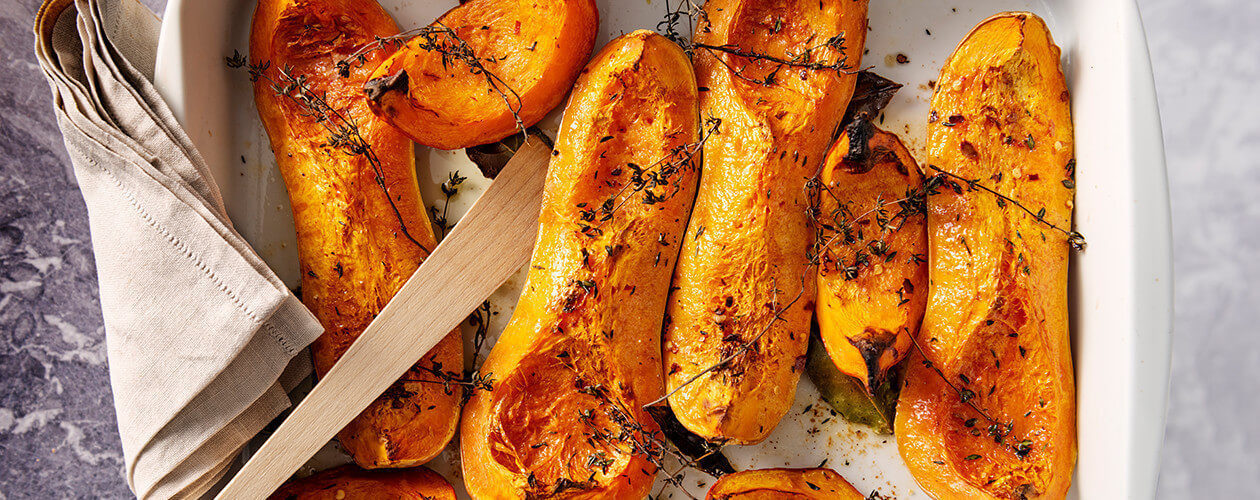Every fall, you can find a variety of winter squash lining the shelves of the grocery store. Whether in a soup, baked dishes, or stuffing, it is sure to complement your menu beautifully!
Fall harvest
A member of the Cucurbitaceae family, winter squash is a delicious addition to any diet. Contrary to summer squash, which is harvested very young throughout the entire summer season, winter squash is generally picked in early fall, when it reaches full maturity.Winter squash varieties
Butternut squash
Butternut squash is one of the most well known winter squash varieties. It owes its popularity to its smooth texture and slightly buttery flavour. Butternut squash is also rich in antioxidants and is a great source of fibre and vitamin A.Spaghetti squash
The flesh of this squash comes out in filaments that resemble the pasta of the same name. Spaghetti squash has many nutritional benefits: in addition to being full of fibre, it’s an excellent source of vitamin C and B6.Acorn squash
Easily recognizable due to its acorn shape, this squash has a delicious hazelnut flavour. Of all the winter squash out there, this is the one with the most potassium, a nutrient that helps reduce the risk of heart disease and balance blood pressure.Pumpkin
An iconic symbol of Halloween, the pumpkin is often used as a decoration for the event. However, it also happens to be delicious and nutritious! Plus, it’s an excellent source of vitamin A and C, as well as beta-carotene, phosphorus, and magnesium.How to choose squash
First, make sure your squash is firm: a soft spot generally indicates the start of rotting. If you buy a whole squash, choose one that still has a stem, as it helps slow the dehydration process. Also, don’t worry about your squash being a little bumpy: these imperfections in no way alter the taste.How to use squash
In soup
Squash is deliciously versatile! In the mood for a heartwarming soup? This incredible butternut squash soup is sure to satisfy!In lieu of pasta
Spaghetti squash makes for a great pasta substitute! Try this recipe for spaghetti squash with tomato and basil sauce and meatballs.As a stuffing
Squash can be used as stuffing for ravioli or roasted peppers. You’ll love this spaghetti squash-stuffed peppers recipe.How to cook squash
In the oven
This cooking method is by far the most popular. We suggest cutting your squash in half, lengthwise, removing the seeds, and coating the flesh with a little oil. Simply cook 40 minutes or so at 375°F.On the stovetop
If you’re short on time, cut your squash into small cubes and sauté 15 minutes or so in a pan with butter and seasoning. A true delight!Preservation
The great thing about winter squash is that it keeps long in a cool, dry place. You can dice your squash and cook it before freezing, or even freeze the flesh as a purée.
Squash is the food that keeps on giving. This fall, all you need is a little imagination to elevate your dishes!
